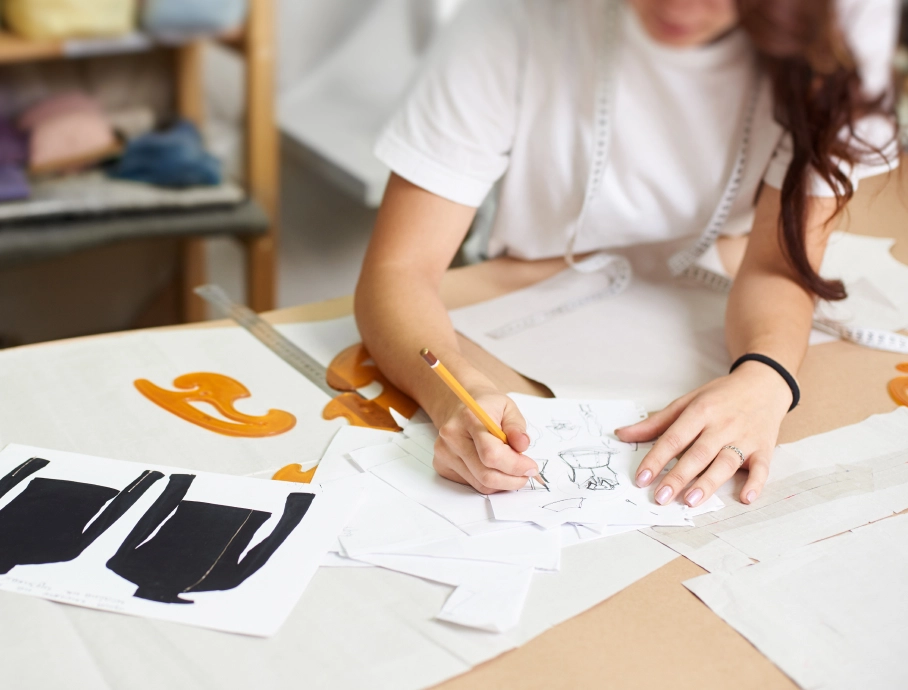Sketches: All of the new technologies are making a major difference in the world of interior design in India. New technologies like virtual reality, 3D visualisation tools, and design software that uses AI are enabling the area of design education to grow quickly. This continuous change is focused on high-quality institutions that are adding new technology to their current teaching techniques. It has become a place where people may learn about interior design.
The fashion design colleges in jaipur offer both old and new design ideas. They also use technology to assist their pupils become ready for the job. Because of this integration, these universities are now among the most popular places for those who want to become interior designers to go to school.
A New Way to Use Technology to Teach Interior Design
People used to design interiors largely by hand-drawing plans, building real models, and utilising their imaginations. The best schools for interior design know that technology is more than just a tool; it’s a language. They are also buying software, labs, seminars, and training modules that will help students communicate their ideas clearly, work collaboratively in real time, and obtain results that are on par with what is expected throughout the world.
Tech Tools That Are Important in Designing Schools
Modern design schools provide their students a lot of different digital tools to help them be more creative. Using a curriculum that is based on technology for blended learningMicrotechnology has made it easier to get an education that fits each student better and is more flexible. The blended method, which combines conventional classroom instruction with online platforms, is currently used by many schools that teach interior design. With learning management systems (LMS), students may attend lectures, create software classes, and feedback sessions from anywhere. This lets them have an experience that is both fun and at their own pace. They are now a big element of how people learn in the modern world.
The Rise of AI and Generative Design in Interior Design Research
Artificial intelligence (AI) is making it harder for students to solve design problems. AI can help software by looking at the architecture of a room and suggesting where to put furniture. It can even estimate how people may act in that space. In generative design, students set limits on things like the size of the room, how much light it receives, and what it will be used for. The system then provides you a list of design suggestions. This is an extra step that most designers don’t take.
AI is still a novel notion in modern interior design education, but several universities in India that are ahead of the curve are beginning to teach it in their higher-level classes. In the future, students who know how to utilise AI technology will have an edge and be more prepared for the changes that will happen and revolutionise how business is done.
There is also a lot of technology involved in this work. Students in schools are now learning how to utilise simulation software that can tell them how much carbon a structure puts out, suggest eco-friendly materials, and figure out how energy-efficient a building is.
Students not only create beautiful environments, but they also think about how their designs will affect the environment when they use a data-driven approach to sustainability. Many institutions and universities are gradually adding tools like ClimateStudio and Ecotect Analysis to their sustainability courses.
Internships And Projects In The Field That Happen In Real Time
Institutes usually collaborate with furniture stores, interior design studios, or real estate developers that utilise video conferencing to provide feedback and briefs. These exercises teach students how to handle customers, money, and the boundaries of the real world. This makes learning more engaging and helpful for their lives.
Digital Portfolios and the Chance to Get a Job
You don’t need to bring massive portfolios to job interviews anymore. Students increasingly use their own websites and services like Behance and Adobe Portfolio to construct digital portfolios. These portfolios include sketches, floor plans, mood boards, and videos of the process that show not just the finished product but also how it was made.
A lot of people who went to the Best Interior Design Colleges in Jaipur now work for design companies all around the globe since they are good with technology. A lot of people have started their own design businesses that are quite active online and gain consumers via digital media.
For example, a graduate student from Jaipur recently won a national design contest by designing a virtual reality (VR) tour of the inside of a co-working space that is healthy for the environment. Another student has started an online design business that uses AI to create one-of-a-kind house designs for customers depending on their likes and finances. This suggests that a tech-first approach may also work for starting a business.
There are many benefits to using technology in design education, but there are also many difficulties. Not every company can afford to purchase the newest laboratories, and it costs a lot of money to get high-end software and equipment. It’s a lot of stress for both teachers and administrators to have to be learning and getting better at their jobs all the time.
Kids from families who don’t have a lot of money may also have trouble paying for things like laptops or memberships that certain platforms need. To keep everyone interested, several of the best colleges give students scholarships, student licenses, and access to computer laboratories.
A Look at What the Future Holds for Interior Design Schools in India
Organisations that can change with the times will keep doing well. The best interior design colleges in Jaipur have already proved that they care about this advancement by making a foundation that integrates design from the past with design that looks to the future.
Final Thoughts
In India, technology is becoming more and more vital for fashion design colleges in Jaipur training. Technology can help with every step of the design process, from coming up with ideas to putting them into reality and working together to make things last. These new technologies not only make the curriculums of schools that employ them more complete, but they also assist students learn how to cope with a professional world that is always changing.




